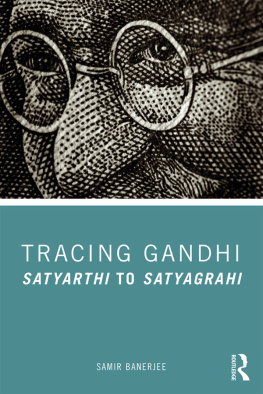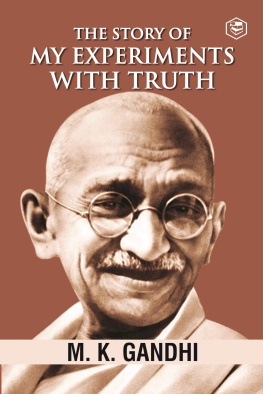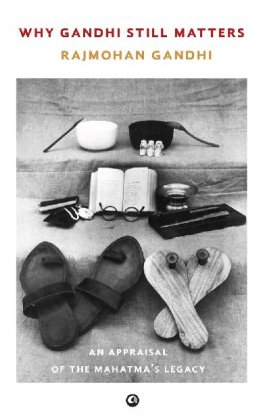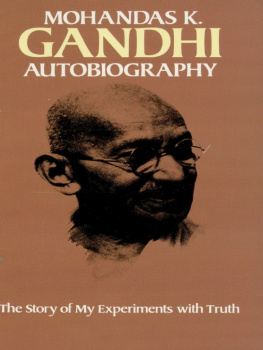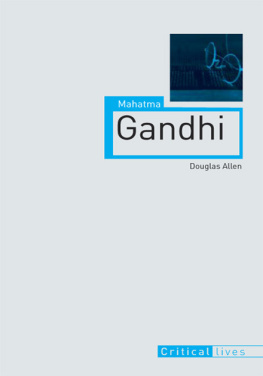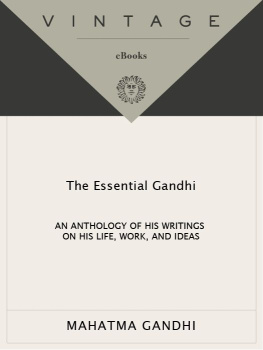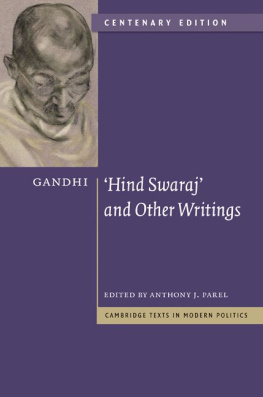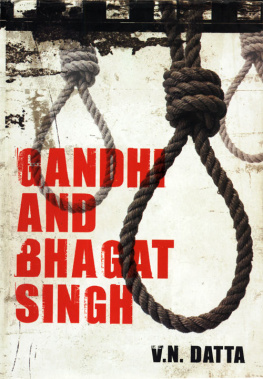Tracing Gandhi
This book traces the journey of Mahatma Gandhi, from being a simple and truth-seeking human being, a satyarthi, to a committed, conscious and social human being, a satyagrahi. It specifically looks at this critical transformation during the time Gandhi was in South Africa. The central argument of the book is that Gandhi evolved from being a satyarthi to a satyagrahi in South Africa. Subsequently in India, he consolidated his orientation with an emphasis on praxis, by developing his ideas as instruments for social and individual struggles. Marked by a series of events, this period was an intense quest of self-realization and understanding, and shows his journey from being Mohandas Karamchand Gandhi to being Mahatma Gandhi.
The book discusses various elements of Gandhian thought and praxis morality, wisdom, non-violence, truth, social justice, dharma, trusteeship, education, sarvodaya, Hind Swaraj, swadeshi, and social service and interprets the relevance of Gandhis thought in the modern world by highlighting its unique significance for social transformation and change.
Lucid and accessible, the book will be useful to scholars and researchers of Gandhi studies, Indian political thought, modern Indian history, and political studies.
Samir Banerjee is an independent researcher based in Bengaluru, India. Besides long-standing involvement in the non-formal sector on issues such as sustainable development, environment, organic farming, watershed development, technology, adult literacy, and slum habitats, he has taught, written, and published on the significance of Gandhian thought and praxis. His last published book was Notes from Gandhigram: Challenges to Gandhian Praxis (2009).
First published 2020
by Routledge
2 Park Square, Milton Park, Abingdon, Oxon OX14 4RN
and by Routledge
52 Vanderbilt Avenue, New York, NY 10017
Routledge is an imprint of the Taylor & Francis Group, an informa business
2020 Indian Institute of Advanced Study (IIAS), Shimla
The right of Samir Banerjee to be identified as author of this work has been asserted by him in accordance with sections 77 and 78 of the Copyright, Designs and Patents Act 1988.
All rights reserved. No part of this book may be reprinted or reproduced or utilised in any form or by any electronic, mechanical, or other means, now known or hereafter invented, including photocopying and recording, or in any information storage or retrieval system, without permission in writing from the publishers.
Trademark notice: Product or corporate names may be trademarks or registered trademarks, and are used only for identification and explanation without intent to infringe.
British Library Cataloguing-in-Publication Data
A catalogue record for this book is available from the British Library
Library of Congress Cataloging-in-Publication Data
A catalog record for this book has been requested
ISBN: 978-0-367-13758-8 (hbk)
ISBN: 978-0-367-28011-6 (pbk)
ISBN: 978-0-429-29921-6 (ebk)
Typeset in Bembo
by Apex CoVantage LLC
Reading Gandhi has never been easy, and as time passes, it gets even more difficult. To understand his thoughts and actions is a demanding task made more difficult by the simplicity and the overarching nuances, sometimes disconcertingly bordering on the naivet, with which he presents them. From the sagacious to the downright evasive is how one feels treading Gandhis path. The famous dialogues, some of which he himself penned, the political disagreements, the showmanship, the trying to draw a line on the sands of time, all the while trying to retain relevance, integrity, and tradition, make for an interesting tapestry of thought, praxis, and hope. Most of us might find insight in the weave of such intricacies while others will most probably remain preoccupied with his busts, specs, portraits, and lathi. However, Gandhi himself, given his deep concern regarding the way we dirty our pristine pure blanket (maille chadar audh ke aaya: nirgun bhajan) would have rued at how he had soiled the blanket. Just reading his agreements and disagreements with a whole host of enormously competent contemporaries, stretching from Tagore, Nehru, Ambedkar to Jinnah, Rajagopalachari and Bose, is a job in itself. Since then many thinkers have tried to help us comprehend the essential Gandhi. Gandhi himself spoke just about everything: economics, politics, culture, gender, and nature, including our personal nature.
So how does one respond? I took my clue from Gandhi and tried to listen to that little voice within. This I hope will permit me my preferences and references while allowing me to be critical and creative in my analysis of events regarding Gandhi and his thoughts and actions. But then there is this small problem: I am to an extent aware how Gandhi has impacted me; but how will I impact Gandhi? This might sound a bit pompous. But take a closer look and you realize that Gandhi today is what we have made of him. His import to us is what makes him mahatma and not what Gandhi thought he was; the solemnity is in what we construct of Gandhi to facilitate our aspirations. However, while Gandhi did what he thought he should do, he would want us to set the terms of reference in order to understand him. He would certainly not want to engage with us about our judgment of him. For him Gandhism itself is to be avoided. Further it is not for anybody to say as to why he should or will be remembered; why his actions will be reconsidered in the future as memories to aid our tryst with civilization. Gandhi prophesied that for 30 years after his death, his ideas would be largely forgotten, but that, generations later, the tapas of millions would bear fruit and that out of his ashes a thousand Gandhis will arise.1 This is the abiding promise of Gandhi; a promise which intrigues and attracts. And as with all attractions, this too runs into a quaint problematic: to remember Gandhi, where should one begin? Should it begin from its inception, or from its impact?
In the case of Gandhi this can be a difficult task. The transition of a simple truthful human being, from a satyarthi to a satyagrahi, from a person fearful of the dark outside world to a person fearful of the ambiguousness within his own self, from Mohandas Karamchand Gandhi to Mahatma Gandhi is a narrative of conversion which is much more complex than proceeding from the passable to the consummate. It was an intense quest of self-realization, of recognizing and being at peace with ahimsa and satya. And in the process, Gandhi evolved from being just a leader, to Mahatma, a soubriquet his fellow Indians bestowed upon him. This journey from a simple dehin-atma to a mahan-atma is a narrative marked by a series of engagements both profound and perfunctory. It is this jugalbandi of the obligatory and the reflective which holds both enormous insights and intriguing fascination. Perhaps it is this suppleness which creates the belief that Gandhi was an event masquerading as a man. Conceivably Gandhi was wary of being squeezed between the contending propensities of internationalism and vasudaiva kutumbakam.
For Gandhi, a fundamental concern, one which he recognized could not be ignored is the notion of development, more precisely who is developed, who is underdeveloped, and who has the authority over the discourse of development. He also accepted that as far as this business of development is concerned, while caution is acceptable, wavering can be disastrous. For him development has all the ingredients of the doom he would not deem. Moreover, development is premised on change, a notion accompanied by the enormously debatable choice. Likewise, while the old is resilient and will not just fade away, it is perilous to debunk the ethos of the prevailing hegemony because it is essentially not very different from our allegedly progressive ideas. In social transformation for large sections of society, there pervades an element of determinism; this comes with an element of despair because it engenders an end of the comfortable known. Faced with such contradictions, in Gandhi we look for a genuineness which could point toward alternatives to the so-called inevitable. Khadi for him was one such necessity which could propose alternatives not only to unemployment and the labour and technology conflict but also to the problematic of technology itself.

